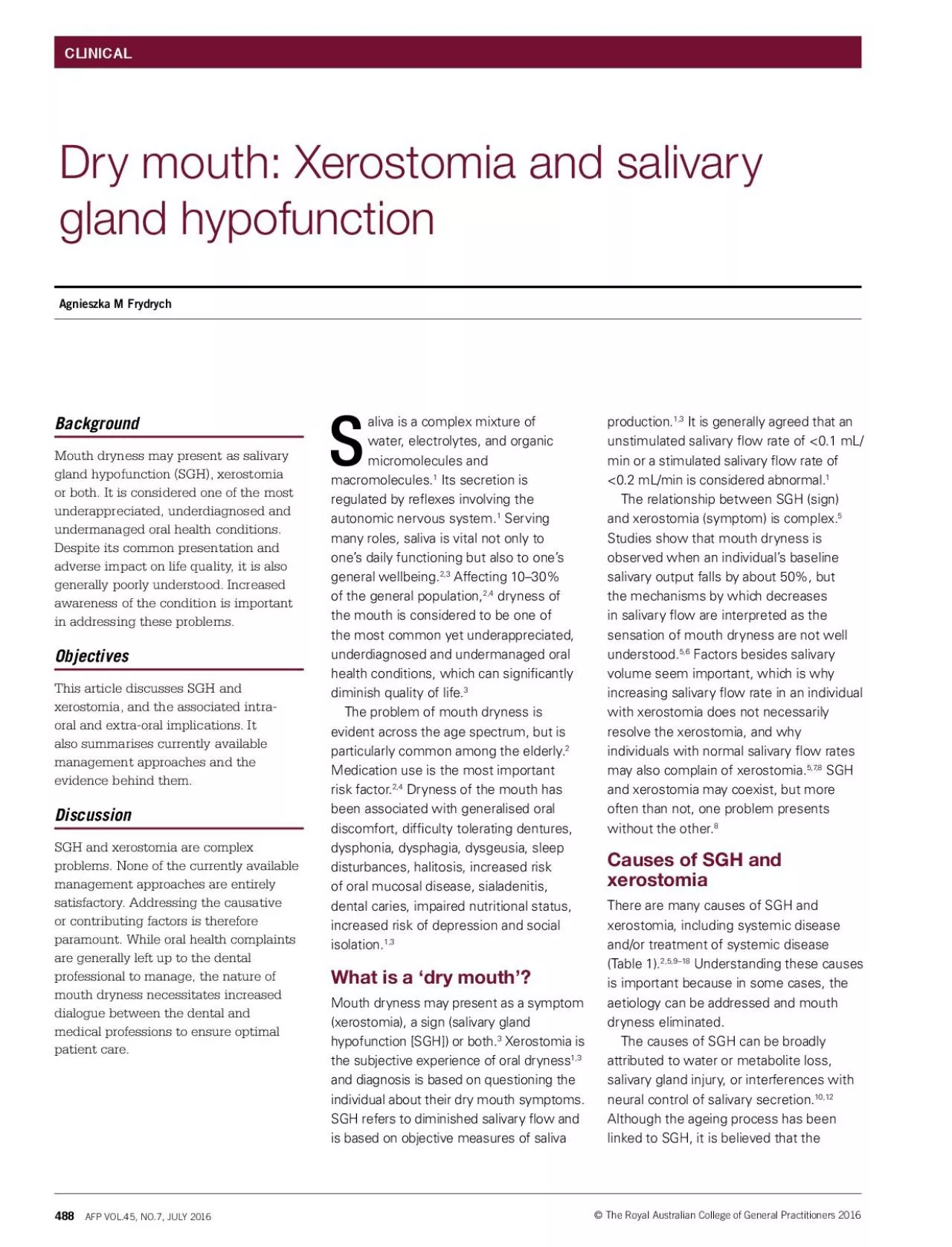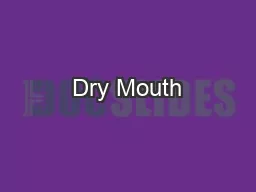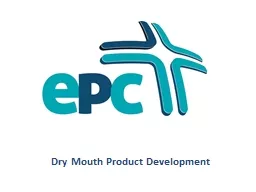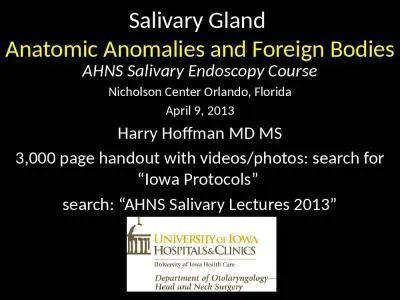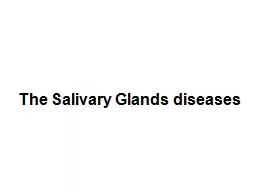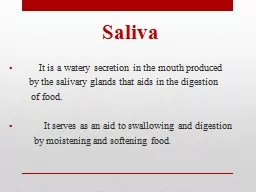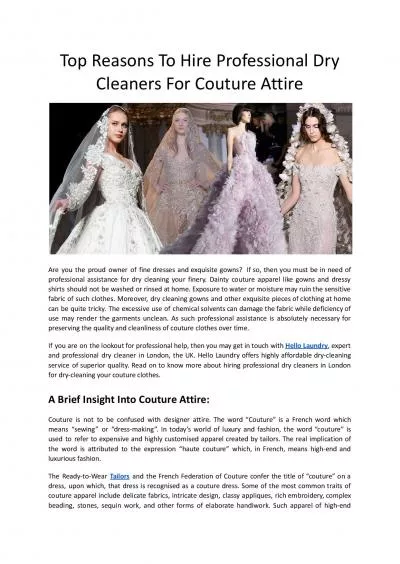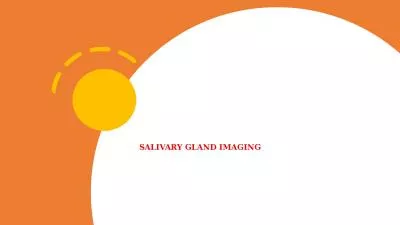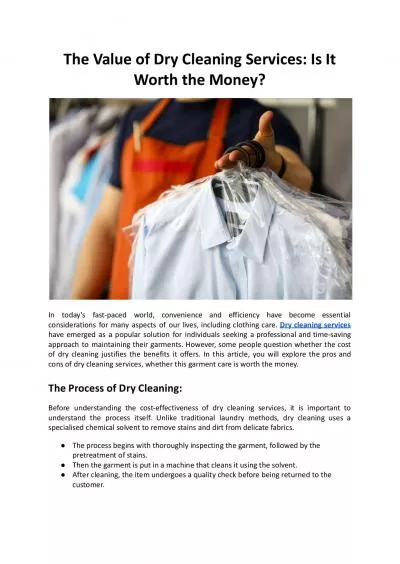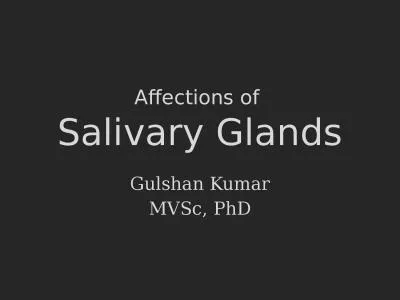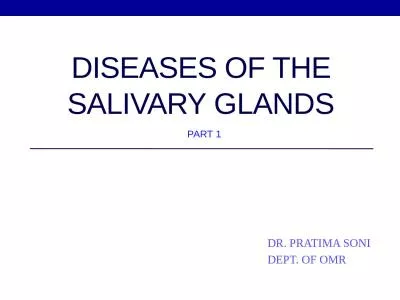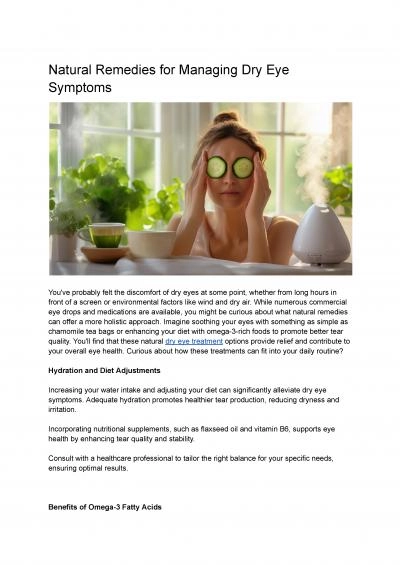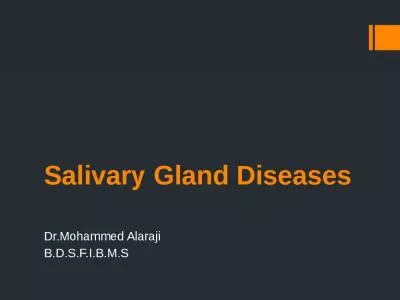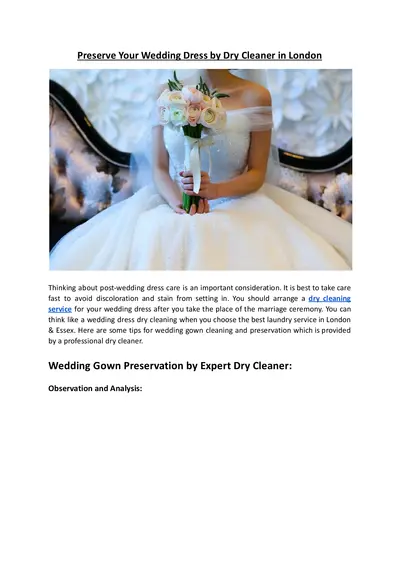PDF-Dry mouth Xerostomia and salivary
Author : fiona | Published Date : 2022-09-06
488 Agnieszka M Frydrych aliva is a complex mixtureof water electrolytes andorganic micromolecules and Its secretion is regulated by re31exes involving the autonomic
Presentation Embed Code
Download Presentation
Download Presentation The PPT/PDF document "Dry mouth Xerostomia and salivary" is the property of its rightful owner. Permission is granted to download and print the materials on this website for personal, non-commercial use only, and to display it on your personal computer provided you do not modify the materials and that you retain all copyright notices contained in the materials. By downloading content from our website, you accept the terms of this agreement.
Dry mouth Xerostomia and salivary: Transcript
Download Rules Of Document
"Dry mouth Xerostomia and salivary"The content belongs to its owner. You may download and print it for personal use, without modification, and keep all copyright notices. By downloading, you agree to these terms.
Related Documents

